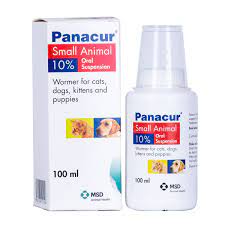Panacur® Small Animal 10% Oral Suspension Species: Cats, Dogs Therapeutic indication: Pharmaceuticals: Endoparasiticides: Anthelmintics for dogs, Anthelmintics for cats Active ingredient: Fenbendazole Product:Panacur® Small Animal 10% Oral Suspension Product index: Panacur® Small Animal 10% Qualitative and quantitative composition Active substance % w/v Fenbendazole 10.000 Other substances Sodium methyl hydroxybenzoate 0.200 Sodium propyl hydroxybenzoate 0.020 Benzyl alcohol 0.4835 For the full list of excipients, see section “Pharmaceutical particulars”. Pharmaceutical form A white oral suspension. Clinical particulars Target Species Domestic dogs, cats, puppies and kittens. Indications for use A broad spectrum anthelmintic for the treatment of domestic dogs and cats infected with immature and mature stages of nematodes of the gastro-intestinal and respiratory tracts. Adult dogs and cats: For the treatment of adult dogs and cats infected with gastro-intestinal nematodes and cestodes: Ascarid spp. (Toxocara canis, Toxocara cati , Toxascaris leonina) Ancylostoma spp. Trichuris spp. Uncinaria spp. Taenia spp. Puppies and kittens: For the treatment of puppies and kittens infected with gastro-intestinal nematodes and puppies infected with protozoa (Giardia spp.). Pregnant dogs: For the treatment of pregnant dogs to reduce prenatal infections with Toxocara canis and the transfer of T.canis and Ancylostoma caninum to their pups via the milk. Also for the treatment of domestic dogs infected with lungworm Oslerus (Filaroides) osleri or protozoa Giardia spp., and cats infected with lungworm Aelurostrongylus abstrusus. Also has an ovicidal effect on nematode eggs. Contraindications None known. Special warnings for each target species None. Special precautions for use Assess body weight as accurately as possible before calculating the dosage. Operator warnings Direct contact with the skin should be kept to a minimum. Wear impermeable rubber gloves and wash hands after use. The use of this product should be based on local epidemiological information about susceptibility of the nematodes and recommendations on how to limit further selection for resistance to anthelmintics. Adverse Reactions Gastrointestinal signs (such as vomiting and diarrhoea) can occur in very rare cases in the dogs and cats. The frequency of adverse reaction is defined using the following convention: - very common (more than 1 in 10 animals displaying adverse reactions during the course of one treatment) - common (more than 1 but less than 10 animals in 100 animals) - uncommon (more than 1 but less than 10 animals in 1,000 animals) - rare (more than 1 but less than 10 animals in 10,000 animals) - very rare (less than 1 animal in 10,000 animals, including isolated reports). Use during pregnancy or lactation The product can be used in pregnant bitches. As teratogenic effects in dogs and cats cannot be completely ruled out in very rare cases, the treatment in the first two trimesters of pregnancy should be based on the benefit-risk evaluation by the responsible veterinary surgeon. Interactions None known. Amounts to be administered and administration route Shake container before use. Routine treatment of adult dogs and cats 1 ml per 1 kg body weight as a single oral dose. (= 100 mg fenbendazole/kg body weight) Practical dosage recommendations: 2 to 4 kg 4 ml 4 to 8 kg 8 ml 8 to 16 kg 16 ml 16 to 24 kg 24 ml 24 to 32 kg 32 ml 32 to 64 kg 64 ml For dogs weighing over 64 kg, an extra 10 ml are required for each additional 10 kg body weight. The dose should be added to feed, directly before feeding or administered by mouth directly after feeding. Treatment should be repeated when natural re-infection with parasitic worms occurs. Routine treatment of adult animals with minimal exposure to infection is advisable 2 to 4 times per year. More frequent treatment at 6 to 8 weekly intervals is advisable for dogs in kennels. Puppies and kittens under 6 months of age 0.5 ml per kg body weight daily for 3 consecutive days given by mouth directly after feeding to unweaned animals or added to feed for weaned animals, directly before feeding. (= 50 mg fenbendazole/kg body weight daily for 3 days) Practical dosage recommendations: Up to 1 kg 0.5 ml daily for 3 days 1 to 2 kg 1 ml daily for 3 days 2 to 4 kg 2 ml daily for 3 days 4 to 6 kg 3 ml daily for 3 days 6 to 8 kg 4 ml daily for 3 days 8 to 10 kg 5 ml daily for 3 days For puppies weighing over 10 kg, an extra 0.5 ml is required daily for each additional kg body weight. Puppies should be treated at 2 weeks of age, 5 weeks of age and again before leaving the breeder's premises. Treatment may also be required at 8 and 12 weeks of age. Thereafter, frequency of treatment can be reduced unless the pups remain in kennels where reinfection occurs more readily. Pregnant dogs 1 ml per 4 kg body weight daily from day 40 of pregnancy continuously to 2 days post-whelping (approximately 25 days) (= 25 mg fenbendazole/kg body weight daily) Practical dosage recommendations: 4 kg 1 ml daily for approx. 25 days 8 kg 2 ml daily for approx. 25 days 12 kg 3 ml daily for approx. 25 days 20 kg 5 ml daily for approx. 25 days 40 kg 10 ml daily for approx. 25 days For dogs weighing over 40 kg, an extra 1 ml is required daily for each additional 4 kg body weight. As treatment of pregnant dogs is 98% effective, puppies from these dogs should themselves be treated with a 3 day course at 2 and 5 weeks of age. Pregnant cats Pregnant cats can be safely treated but only require a single treatment at the routine adult dose rate. Administer 1ml per kg body weight as a single dose. (= 100mg fenbendazole/kg body weight) Increased dosing for specific infections For the treatment of clinical worm infestations in adult dogs and cats or Giardia spp. infections in dogs, administer 1 ml per 2 kg body weight daily for 3 consecutive days. (= 50 mg fenbendazole/kg body weight daily for 3 days) For the control of lungworm Oslerus (Filaroides) osleri in dogs administer 1 ml per 2 kg body weight for 7 consecutive days. (= 50 mg fenbendazole/kg body weight daily for 7 days) A repeat course of treatment may be required in some cases. For the control of lungworm Aelurostrongylus abstrusus in cats administer 1 ml per 2 kg body weight for 3 consecutive days. (= 50 mg fenbendazole/kg body weight daily for 3 days) Overdose Benzimidazoles have a high margin of safety. No specific overdose symptoms are known. No specific actions required. Withdrawal periods Not applicable.


